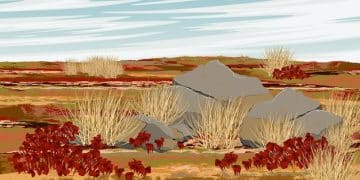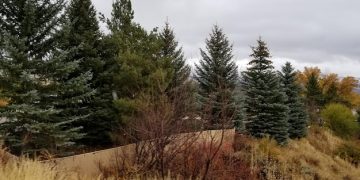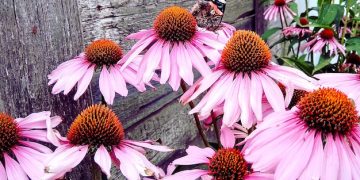Climate Change and US Spring Bloom: What to Expect

Climate change significantly alters the timing of spring bloom across the US, causing earlier blooms in some regions and delayed or erratic patterns in others, impacting ecosystems and agriculture.
Have you noticed spring arriving earlier or behaving strangely lately? How does climate change affect the timing of spring bloom in different regions of the US? It’s disrupting nature’s calendar, with significant consequences for ecosystems and economies.
The Early Bloom: A Sign of Changing Times
Spring bloom, the period when plants flower and produce new leaves, is a crucial event in many ecosystems. It signals the start of the growing season and influences the behavior of insects, birds, and other animals. However, climate change is altering the timing of spring bloom, leading to both earlier and more erratic patterns across the United States.
Rising temperatures, altered precipitation patterns, and changes in the frequency of extreme weather events are all contributing to these shifts. Understanding the specific ways in which climate change is impacting spring bloom is essential for predicting and mitigating the ecological and economic consequences.
Temperature’s Role in Bloom Timing
Temperature plays a primary role in regulating the timing of spring bloom. Many plants require a certain period of cold temperatures during the winter, followed by warmer temperatures in the spring, to trigger flowering. As temperatures rise due to climate change, these requirements are being met earlier, leading to earlier bloom times in many regions.
- Earlier Springs: Warmer winters mean plants reach their chilling requirements faster, resulting in earlier blooms.
- False Springs: Fluctuations in temperature can trick plants into blooming prematurely, only to be damaged by a late frost.
- Geographic Variations: The impact of rising temperatures varies across different regions of the US, with some areas experiencing more significant changes than others.
- Impact on Pollinators: Earlier blooms can disrupt the synchrony between plants and their pollinators, leading to mismatches and reduced pollination success.
The southeastern United States, for example, has seen some of the most significant changes in spring bloom timing, with many plants flowering weeks earlier than they did historically. However, these earlier blooms are not always beneficial, as they can increase the risk of damage from late-season frosts.
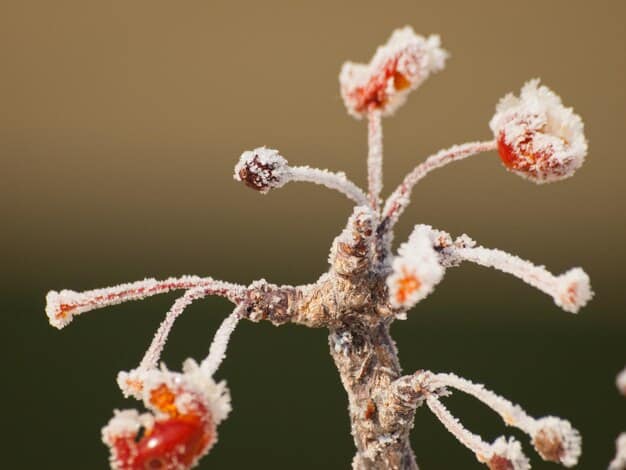
Regional Variations in Bloom Response
The effects of climate change on spring bloom timing vary significantly across different regions of the United States. Factors such as latitude, altitude, proximity to the coast, and local weather patterns all influence how plants respond to changing temperatures and precipitation.
Understanding these regional variations is crucial for developing effective strategies for managing the impacts of climate change on ecosystems and agriculture. Different regions face unique challenges and require tailored solutions.
Northeast: Extended Growing Seasons
In the northeastern United States, warmer temperatures are leading to longer growing seasons and earlier spring blooms. This can benefit some crops, but it also increases the risk of pest infestations and diseases.
- Maple Syrup Production: Changes in temperature affect the timing and quality of maple sap production, impacting the maple syrup industry.
- Forest Ecosystems: Earlier leaf-out can alter the structure and function of forest ecosystems, affecting carbon sequestration and wildlife habitat.
- Invasive Species: Warmer temperatures can favor the spread of invasive plant species, which can outcompete native plants.
The timing of bloom for iconic species like the American dogwood and the red maple are shifting earlier, impacting the visual landscape of the region. Forest managers and conservationists are working to understand these changes and develop strategies for adapting to them.
Southeast: False Starts and Frost Damage
The southeastern United States is particularly vulnerable to the effects of climate change on spring bloom timing. Warmer winters can lead to very early blooms, followed by damaging frosts that kill flowers and reduce crop yields.
- Peach and Blueberry Crops: The timing of bloom in peach and blueberry crops is critical for fruit production, and earlier blooms increase the risk of frost damage.
- Wildflower Blooms: Earlier wildflower blooms can disrupt the synchrony between plants and their pollinators, leading to reduced pollination success.
- Increased Pest Pressure: Warmer temperatures can allow pests to survive the winter and emerge earlier in the spring, increasing the pressure on crops and natural ecosystems.
Farmers in the Southeast are experimenting with various strategies for protecting their crops from frost damage, including using irrigation to create ice barriers and planting varieties that bloom later in the season. However, these strategies are not always effective, and they can be costly.
West Coast: Water Scarcity and Bloom Shifts
On the West Coast, climate change is exacerbating water scarcity issues and altering the timing of spring bloom in complex ways. Changes in snowpack, rainfall patterns, and temperature are all influencing when plants flower and produce new leaves.
- Snowpack Reduction: Declining snowpack in the mountains reduces the availability of water for irrigation and streamflow, impacting plant growth and bloom timing.
- Drought Conditions: Prolonged drought conditions can delay or suppress spring bloom, leading to reduced productivity in both natural and agricultural ecosystems.
- Wildfire Risk: Earlier spring blooms can lead to longer fire seasons, increasing the risk of wildfires.
California’s iconic wildflowers are blooming earlier and in different locations, reflecting the changing climate. Conservationists are working to protect these vulnerable ecosystems and ensure that they can continue to thrive in the face of climate change.
Across the United States, the timing of spring bloom is a sensitive indicator of climate change. Each region faces unique challenges, requiring tailored management strategies to mitigate the impacts on ecosystems and agriculture.
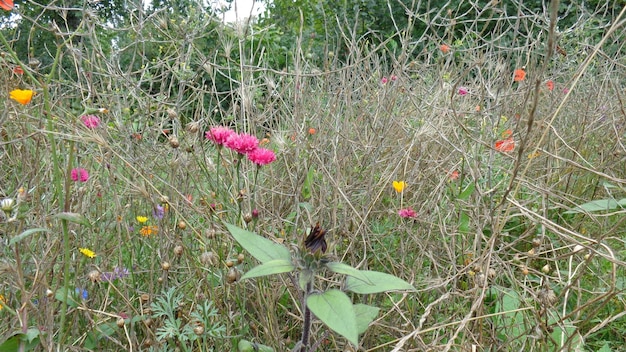
Ecological Consequences of Altered Bloom Timing
Changes in spring bloom timing have far-reaching ecological consequences, affecting everything from insect populations to bird migrations. Disruptions to the natural synchrony between plants and animals can lead to mismatches and reduced biodiversity.
Understanding these ecological consequences is essential for developing effective conservation strategies and mitigating the impacts of climate change on natural ecosystems. We must protect the intricate web of life that depends on the predictable timing of spring.
Mismatches Between Plants and Pollinators
One of the most significant ecological consequences of altered bloom timing is the disruption of synchrony between plants and their pollinators. Many insects, such as bees and butterflies, rely on specific plants for food during their early life stages. If plants bloom earlier than usual, pollinators may emerge too late to take advantage of the flowers, leading to reduced pollination success.
This mismatch can have cascading effects throughout the ecosystem, affecting plant reproduction, seed production, and the availability of food for other animals. Conservation efforts are needed to ensure that pollinators have access to the resources they need to thrive in a changing climate.
Impacts on Bird Migration
Many migratory birds time their arrival in North America to coincide with the peak of insect abundance, which is often linked to the timing of spring bloom. If plants bloom earlier than usual, insect populations may also emerge earlier, leading to a mismatch between bird arrival and food availability.
This can reduce the reproductive success of birds and lead to population declines. Conserving bird habitat and managing ecosystems to support healthy insect populations are crucial for mitigating the impacts of climate change on bird migrations.
Changes in Food Web Dynamics
Altered bloom timing can also disrupt food web dynamics by changing the timing of resource availability for different species. For example, if plants bloom earlier than usual, herbivores may have access to food earlier in the season, which can alter their growth rates and reproductive success.
These changes can have ripple effects throughout the food web, affecting the abundance and distribution of predators and other consumers. Understanding these complex interactions is essential for managing ecosystems in a changing climate.
Agricultural Implications and Economic Impacts
The agricultural implications of altered spring bloom timing are significant, with potential impacts on crop yields, pest management, and the overall economic viability of farming operations. Changes in bloom timing can affect the suitability of certain regions for growing specific crops and increase the risk of crop losses due to frost damage or pest infestations.
Farmers need to adapt to these changing conditions by adopting new management practices, planting different varieties, and investing in technologies that can help them mitigate the impacts of climate change. The economic stability of the agricultural sector depends on our ability to understand and respond to these challenges.
Crop Yields and Quality
Changes in spring bloom timing can directly affect crop yields and quality. Earlier blooms can increase the risk of frost damage, which can kill flowers and reduce fruit production. Delayed blooms can shorten the growing season, reducing the time available for crops to mature.
The timing of bloom can also affect the development of fruit and other plant parts, influencing their size, shape, and nutritional content. Maintaining stable and predictable growing conditions is essential for ensuring high-quality crop production.
Pest and Disease Management
Altered spring bloom timing can affect pest and disease dynamics, increasing the pressure on crops and requiring more intensive management practices. Warmer temperatures can allow pests to survive the winter and emerge earlier in the spring, increasing their feeding period and their potential to damage crops.
Changes in humidity and precipitation patterns can also favor the spread of certain diseases, requiring farmers to use more pesticides and fungicides to protect their crops. Integrated pest management strategies that combine biological control, cultural practices, and targeted pesticide applications are crucial for minimizing the environmental impacts of pest and disease management.
Adapting to Change
Farmers are already adapting to the changing climate by adopting new management practices, planting different varieties, and investing in technologies that can help them mitigate the impacts of altered bloom timing. These adaptive strategies can include:
- Planting later-blooming varieties: Selecting crop varieties that bloom later in the season can reduce the risk of frost damage.
- Using irrigation for frost protection: Applying water to crops before a frost can create an ice barrier that protects flowers from freezing.
- Implementing integrated pest management: Using a combination of biological control, cultural practices, and targeted pesticide applications can minimize the environmental impacts of pest and disease management.
The agricultural sector needs to continue to innovate and adapt to the changing climate to ensure a stable and sustainable food supply for the future.
Mitigation and Adaptation Strategies
Addressing the impacts of climate change on spring bloom timing requires a combination of mitigation and adaptation strategies. Mitigation involves reducing greenhouse gas emissions to slow the rate of climate change, while adaptation involves adjusting to the changes that are already occurring.
Both mitigation and adaptation are essential for protecting ecosystems, agriculture, and human well-being in a changing climate. We must act now to reduce our carbon footprint and prepare for the challenges ahead.
Reducing Greenhouse Gas Emissions
The most effective way to mitigate the impacts of climate change on spring bloom timing is to reduce greenhouse gas emissions. This can be achieved through a variety of strategies, including:
- Transitioning to renewable energy sources: Reducing our reliance on fossil fuels by switching to renewable energy sources such as solar, wind, and hydropower.
- Improving energy efficiency: Reducing our energy consumption through improved insulation, efficient appliances, and smart building design.
- Protecting and restoring forests: Forests play a critical role in absorbing carbon dioxide from the atmosphere, so protecting and restoring them is essential for mitigating climate change.
Collective action at the individual, community, national, and international levels is needed to achieve significant reductions in greenhouse gas emissions.
Adaptive Management Practices
Adapting to the changes that are already occurring in spring bloom timing requires implementing a variety of adaptive management practices, including:
- Monitoring and predicting bloom timing: Using data and models to track changes in bloom timing and predict future patterns.
- Developing climate-resilient crops: Breeding and selecting crop varieties that are better adapted to changing temperatures and precipitation patterns.
- Implementing water-efficient irrigation practices: Using irrigation technologies that minimize water waste and maximize water use efficiency.
Adaptive management practices must be tailored to the specific conditions of each region and ecosystem. Collaboration between scientists, land managers, and policymakers is essential for developing and implementing effective adaptation strategies.
Ultimately, a coordinated effort to reduce greenhouse gas emissions and implement adaptive management practices is needed to protect ecosystems, agriculture, and human well-being from the impacts of climate change on spring bloom timing.
| Key Point | Brief Description |
|---|---|
| 🌡️ Rising Temperatures | Cause earlier blooms but increase frost risk. |
| 🌸 Ecological Mismatches | Disrupt plant-pollinator relationships. |
| 💧 Regional Water Stress | Affects West Coast bloom patterns. |
| 🌱 Agricultural Impacts | Challenges crop yields and pest control. |
Frequently Asked Questions
▼
Warmer temperatures due to climate change allow plants to meet their chilling requirements earlier, triggering earlier flowering. This can lead to imbalances in ecosystems.
▼
Earlier blooms can increase the risk of frost damage to crops. Changes in seasonality may also disrupt pest and disease control strategies, impacting yields.
▼
An ecological mismatch occurs when plants and animals that depend on each other (like pollinators and flowers) become out of sync due to climate change, reducing survival rates.
▼
The impacts of altered bloom timing vary, but the Southeast faces increased frost risks while the West Coast deals with water stress affecting bloom patterns severely.
▼
Reducing greenhouse gas emissions and adapting agricultural practices (like planting later-blooming varieties) are crucial. Monitoring and predictive modeling also help manage impacts.
Conclusion
Climate change is undeniably shifting the timing of spring bloom across the United States, with profound impacts on ecosystems and agriculture. By understanding these changes and implementing effective mitigation and adaptation strategies, we can protect the natural wonders and economic stability of our regions.

